This biscoff cheesecake is made with a biscoff cookie crust, creamy spiced cheesecake, and a layer of biscoff spread on top. It's the ultimate dessert for biscoff lovers!

Jump to:
This biscoff cheesecake is a love letter to the best little spiced biscuits to ever exist. This cheesecake is sandwiched between two layers of biscoff for maximum warm and cozy biscoff flavour. If you love biscoff desserts, you have to try this.
Why you'll love this recipe
- Crunchy biscoff cookie crust. The crust is made with 2 ingredients and it's my go-to crust for any kind of cheesecake.
- Rich and creamy baked cheesecake. You'll love this if you love thick and smooth New York-style cheesecake.
- Biscoff spread topping. No biscoff cheesecake is complete without a generous layer of biscoff spread on top which gives the cheesecake more of that warm, spiced biscoff flavour.
- Easy to make. This cheesecake is easy to make and can be prepared in less than an hour. The hardest (and longest) part is just waiting for it to bake and set in the fridge.
- Good make-ahead recipe. Since this cheesecake needs to chill in the fridge for at least a few hours but preferably overnight, you can easily make it 1-2 days before you plan on serving it.
Tools
- 9" springform pan - You'll need a springform pan with a removable bottom which makes releasing the baked cheesecake very easy.
- Electric hand mixer - Optional. A hand mixer will make mixing the cheesecake batter much easier, especially if your cream cheese is firmer than normal. However, you can also just use a spatula instead. I've made this kind of cheesecake several times both ways with great results. A spatula takes more manual work and your arm might get tired but it smooshes down the cream cheese very effectively.

Ingredients
As always, the full recipe card with ingredient amounts and instructions is at the bottom of this post! Keep reading for more details on each ingredient or skip ahead to the recipe.
- Biscoff cookies - You'll need biscoff cookies for the crust and garnish on top of the cheesecake. They're from the Lotus brand but you can use other similar types of spiced cookies like speculoos.
- Unsalted butter
- Cream cheese - Use cream cheese that comes in bricks, not the spreadable kind in tubs. Be sure to take them out of the fridge a few hours ahead of time to let them soften to room temperature otherwise, you'll end up with solid chunks of cream cheese in your batter.
- Granulated sugar
- Greek yogurt - This thins out the cheesecake batter a bit and adds the slightly tangy flavour you're familiar with in cheesecakes. You can also substitute it with sour cream.
- Vanilla extract
- Ground cinnamon
- Eggs - These should also be at room temperature before using them. The eggs give the cheesecake structure and hold everything together.
- Biscoff spread - Most places that sell Lotus biscoff cookies also sell Lotus biscoff spread. You can also use similar products like speculoos spread or cookie butter. It's normally a peanut butter-like consistency so you'll want to warm it up in the microwave or on the stovetop until it's runny and pourable.
How to make biscoff cheesecake
Prep - Line a 9" springform pan with parchment paper and set aside.
Crush cookies - Use a food processor or place the biscoff cookies in a ziploc bag. Use a rolling pin to whack the cookies until they're very finely crushed. Transfer the crumbs to a medium bowl.

Stir in butter - Stir in melted butter until the mixture resembles wet sand.
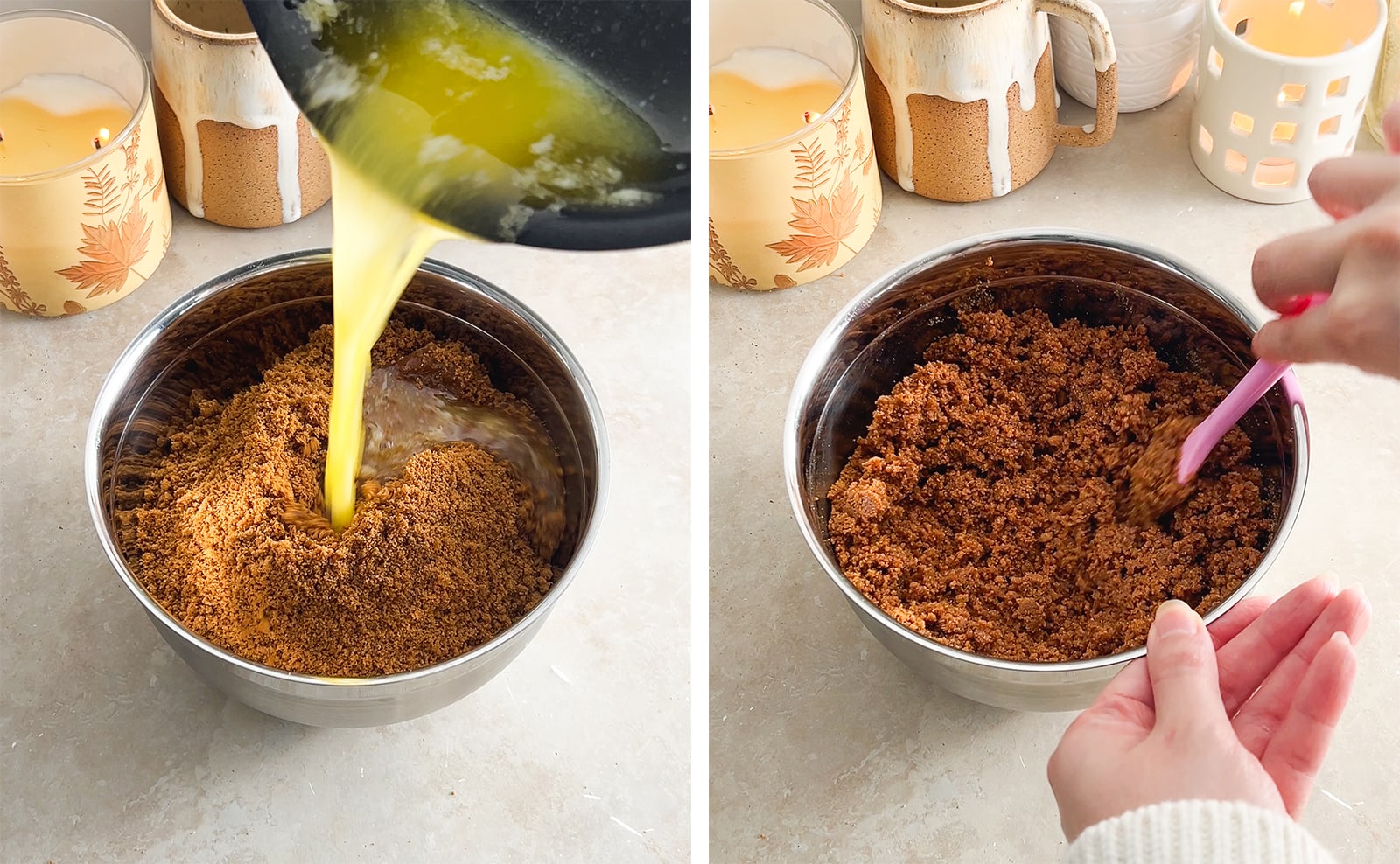
Press into pan - Transfer the mixture to your lined pan. Use the bottom of a flat-bottomed cup to press the crumb mixture into an even layer on the bottom of the pan and up the sides of the pan.
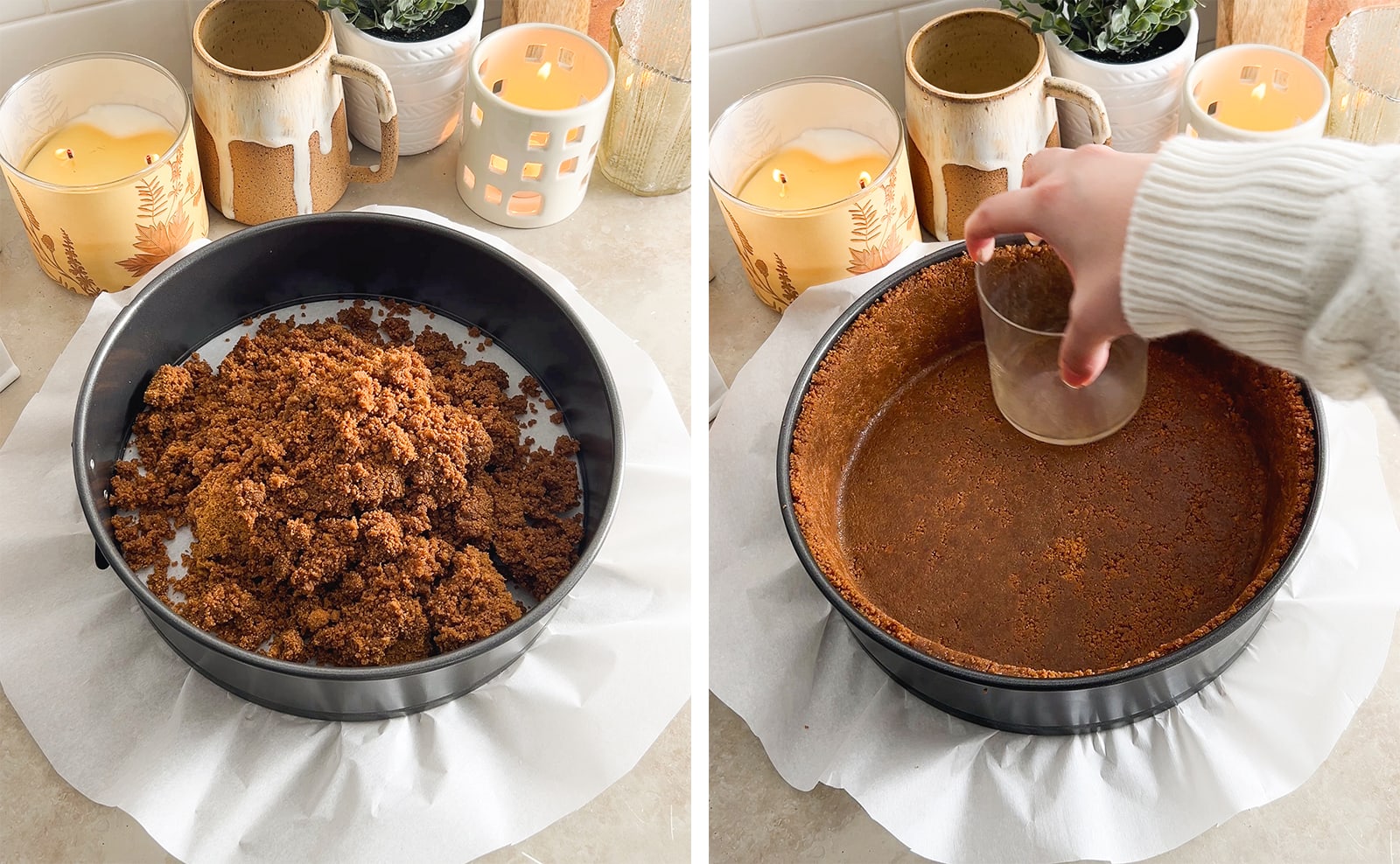
Chill - Chill the crust in the fridge while you prepare the rest of the cheesecake.
CHEESECAKE
Prep - Preheat the oven to 325°F.
Mix batter - In a large mixing bowl, add cream cheese, sugar, greek yogurt, vanilla extract, and cinnamon. Use an electric hand mixer or a spatula to mix until it's very creamy without any lumps of cream cheese. Mix in one egg at a time until it's all combined.
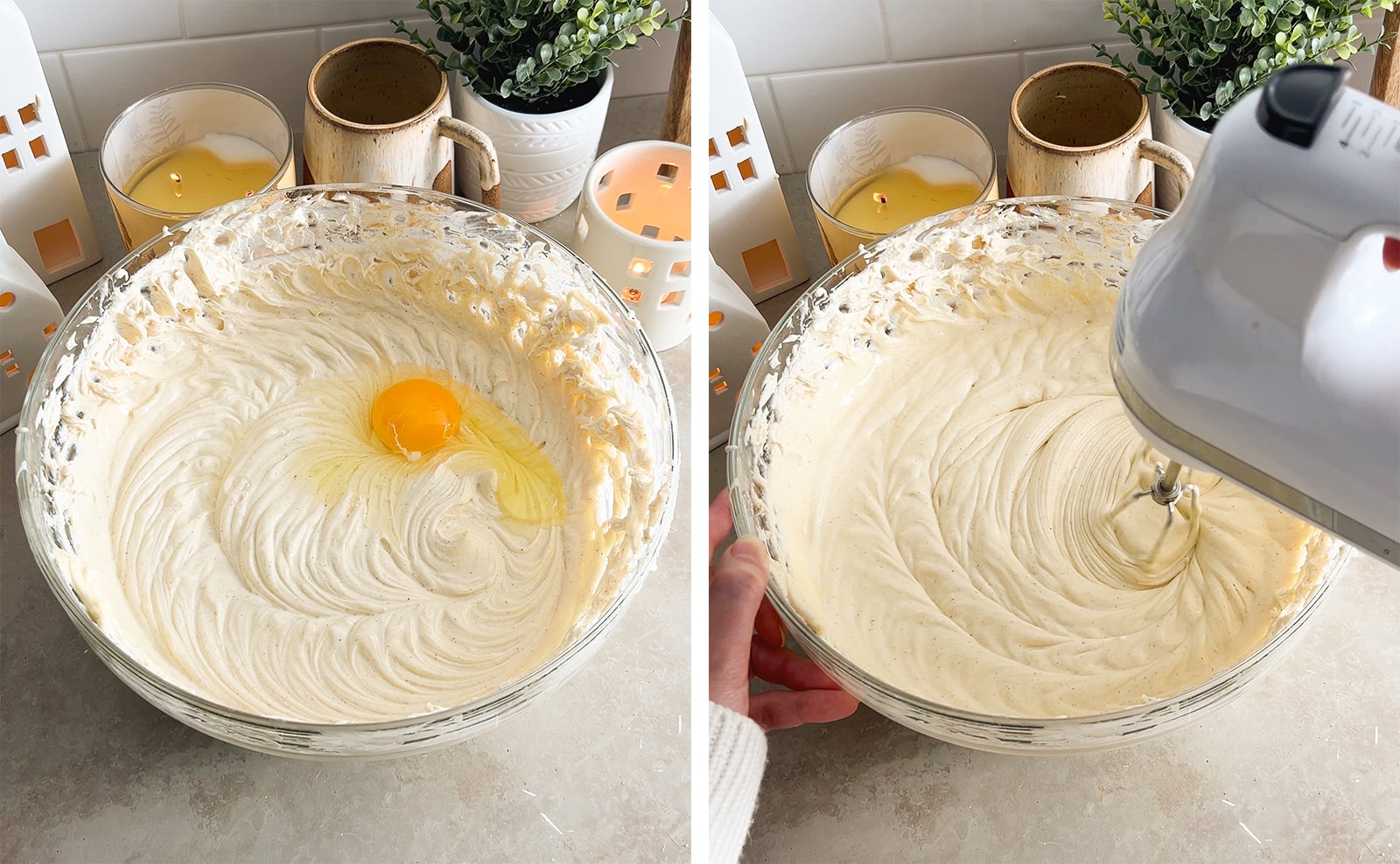
Fill pan - Pour the cheesecake batter into your pan on top of the chilled crust.
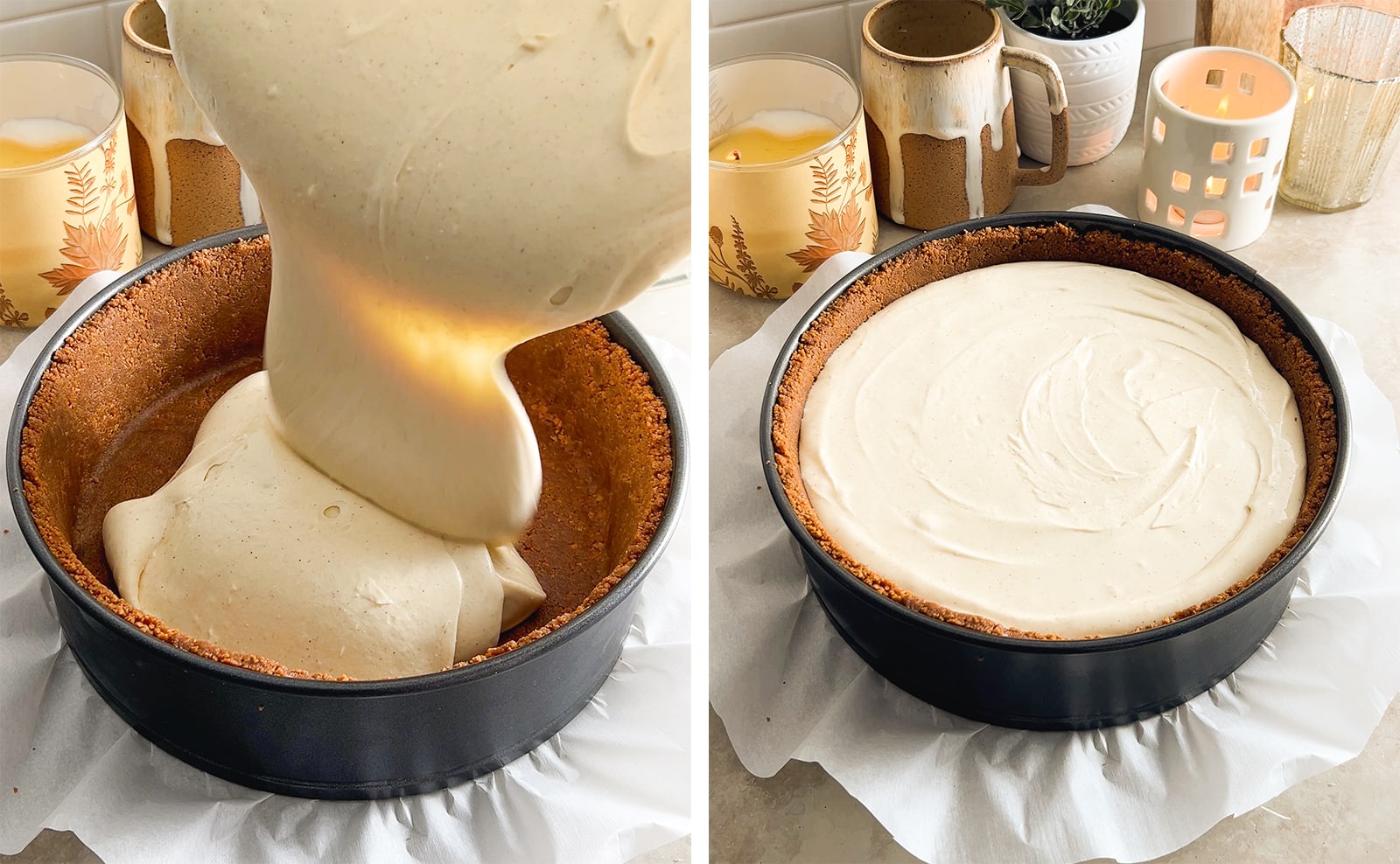
Bake - Place an empty pan or baking tray on the bottom rack of the oven and fill it with about 1" of hot water. Bake the cheesecake on the middle rack for about 65-70 minutes or until the edges are set but the middle is still jiggly.
Chill - Let the cheesecake cool completely at room temperature before chilling it in the fridge for at least 4 hours or overnight.
TOPPINGS
Release cheesecake - Once chilled, slide an offset spatula or a skewer around the edge of the cheesecake and release it from the pan onto a serving dish.
Smooth on biscoff spread - Pour warm and runny biscoff spread on top of the cheesecake and spread it into an even layer with an offset spatula before it sets. Crumble up a few biscoff cookies to sprinkle around the cheesecake and garnish with additional cookies.
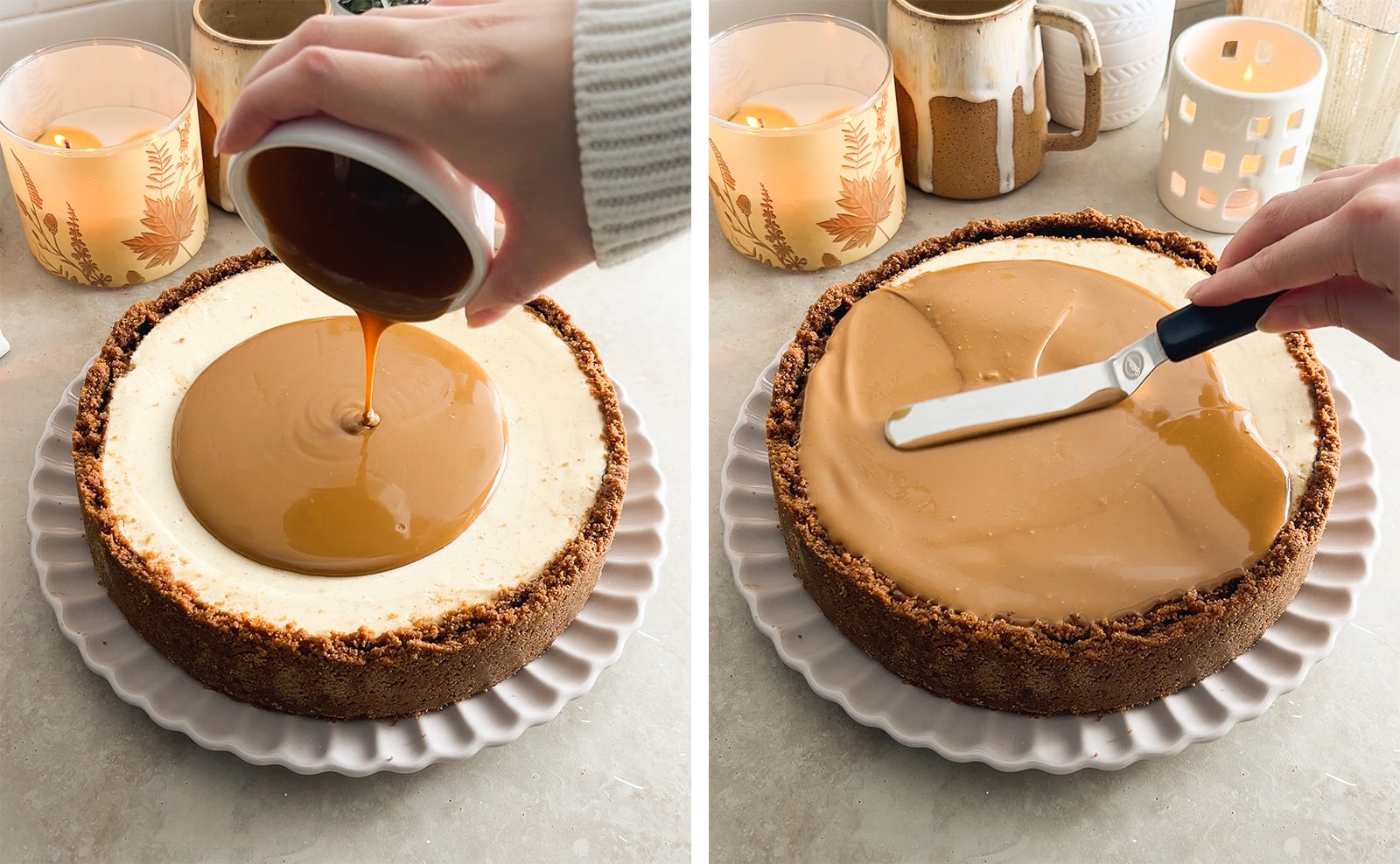
Storage
This biscoff cheesecake can be stored in an airtight container or wrapped with plastic wrap in the fridge for up to 5 days.
Freezing
Leftover slices can be frozen by placing them in an airtight container or wrapping them well in plastic wrap and/or aluminum foil and freezing for up to 1 month.
Thaw in the fridge overnight before eating.
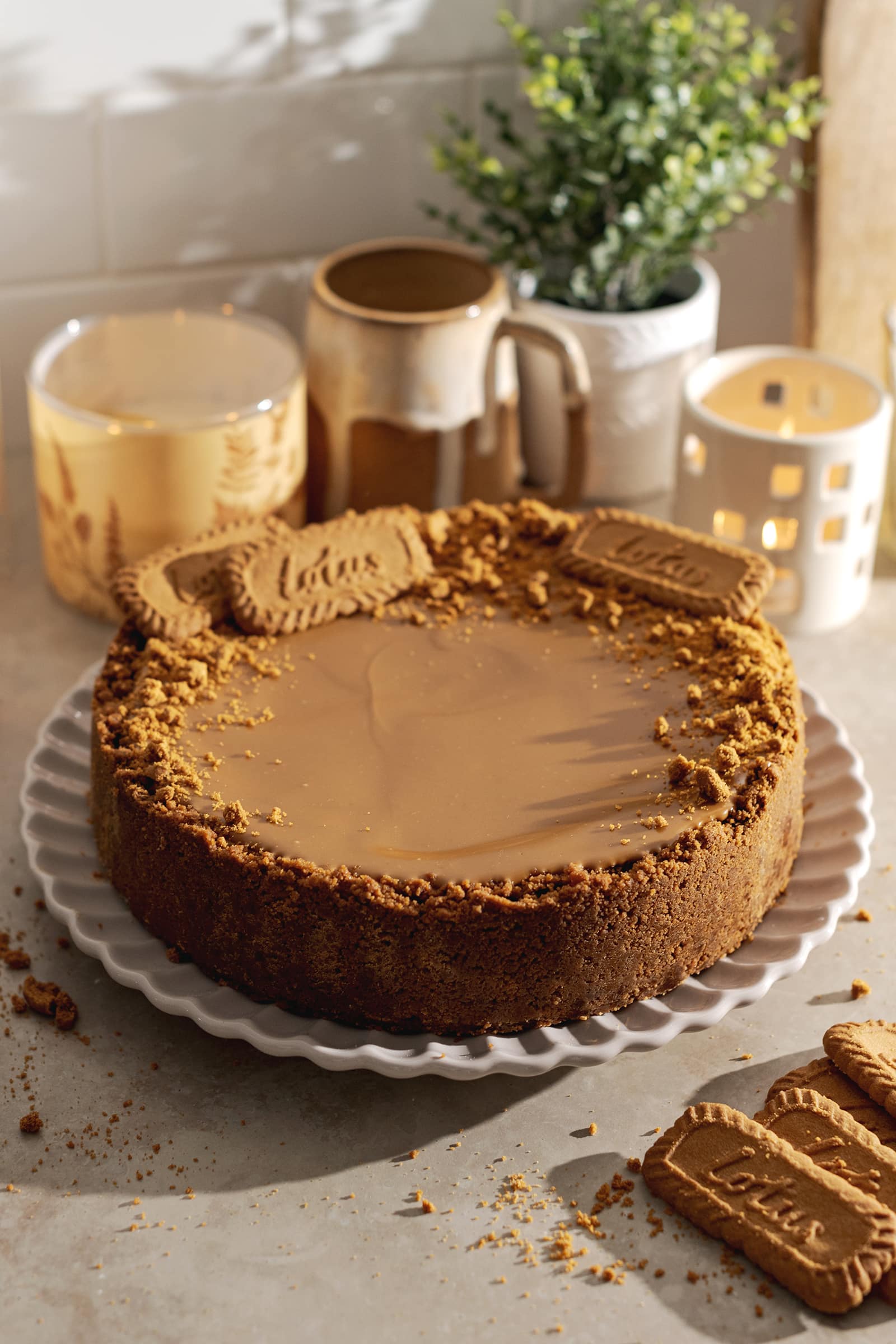
Tips for success
- Use room temperature ingredients. The cream cheese, in particular, should be softened to room temperature otherwise it will be difficult to mix (especially if you're using a spatula instead of a hand mixer) and you might end up with chunks of cold cream cheese in your batter. If the recipe indicates room temperature, you should follow it for the best results.
- Place a pan of hot water on the bottom rack. Instead of a water bath, I always opt to place a pan of hot water in the oven instead. The easiest way to do this is to place the pan in the oven first and then fill it up with a kettle. It creates a humid environment inside the oven to prevent the cheesecake from cracking and it also catches any leaks that might drip down from the springform pan.
- Wrap the bottom edge of the springform pan with aluminum foil. Speaking of leaks, I find that springform pans often leak during baking. I've had too many leaks on the bottom of my oven that burn during baking so I always recommend wrapping the bottom of the pan to avoid leaks.
- Don't overbake cheesecake. Overbaked cheesecake can be grainy and dry and crack on top. For the best results, do the jiggle test. Hold onto both sides of the pan (with oven mitts) and gently shake it back and forth. If the outer 2" of the cheesecake is set but the middle is still jiggly, it's ready to take out of the oven. If you think you've overbaked it, transfer it from the oven directly to the fridge to stop the cooking process faster.
Frequently asked questions
This recipe is scaled for a 9" pan. To make it in a smaller pan (e.g. a 6" pan), halve the recipe.
Yes, you can make this cheesecake 1-2 days ahead of time. Keep it in an airtight container to prevent it from drying out. If you're wrapping it in plastic wrap, I'd recommend adding the biscoff spread on top before serving so that the plastic wrap doesn't ruin the smooth surface.

More biscoff recipes to try
Recipe
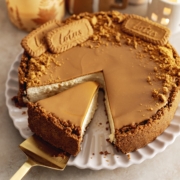
Biscoff Cheesecake
Equipment
Ingredients
Crust
- 350 g biscoff cookies, about 45 cookies
- 150 g unsalted butter, melted
Cheesecake
- 920 g cream cheese, 4 bricks, softened to room temperature
- 150 g granulated sugar
- 150 g greek yogurt, room temperature
- 1 tablespoon vanilla extract
- 1 teaspoon ground cinnamon
- 4 large eggs, room temperature
Toppings
- 150 g biscoff spread, warmed until runny
- biscoff cookies, as many as you'd like
Instructions
Crust
- Prep: Line a 9" springform pan with parchment paper and set aside.
- Crush cookies: Use a food processor or place the biscoff cookies in a ziploc bag. Use a rolling pin to whack the cookies until they're very finely crushed. Transfer the crumbs to a medium bowl.
- Stir in butter: Stir in melted butter until the mixture resembles wet sand.
- Press into pan: Transfer the mixture to your lined pan. Use the bottom of a flat-bottomed cup to press the crumb mixture into an even layer on the bottom of the pan and up the sides of the pan.
- Chill: Chill the crust in the fridge while you prepare the rest of the cheesecake.
Cheesecake
- Prep: Preheat the oven to 325°F.
- Mix batter: In a large mixing bowl, add cream cheese, sugar, greek yogurt, vanilla extract, and cinnamon. Use an electric hand mixer or a spatula to mix until it's very creamy without any lumps of cream cheese. Mix in one egg at a time until it's all combined.
- Fill pan: Pour the cheesecake batter into your pan on top of the chilled crust.
- Bake: Place an empty pan or baking tray on the bottom rack of the oven and fill it with about 1" of hot water. Bake the cheesecake on the middle rack for about 65-70 minutes or until the edges are set but the middle is still jiggly.
- Chill: Let the cheesecake cool completely at room temperature before chilling it in the fridge for at least 4 hours or overnight.
Toppings
- Release cheesecake: Once chilled, slide an offset spatula or a skewer around the edge of the cheesecake and release it from the pan onto a serving dish.
- Smooth on biscoff spread: Pour warm and runny biscoff spread on top of the cheesecake and spread it into an even layer with an offset spatula before it sets. Crumble up a few biscoff cookies to sprinkle around the cheesecake and garnish with additional cookies.

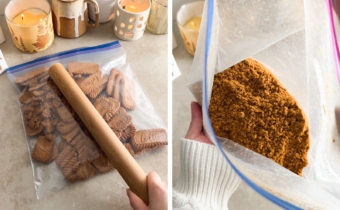
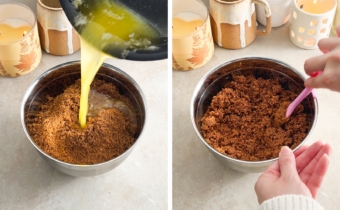
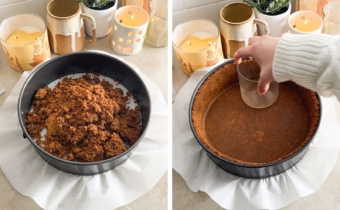

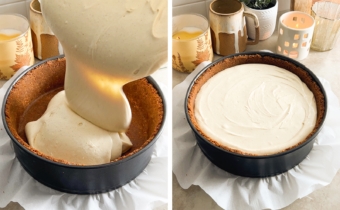
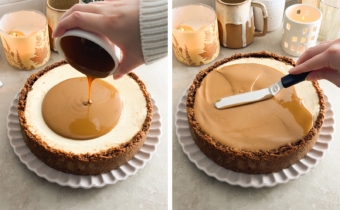
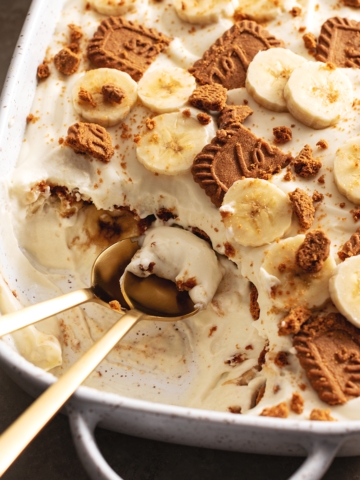
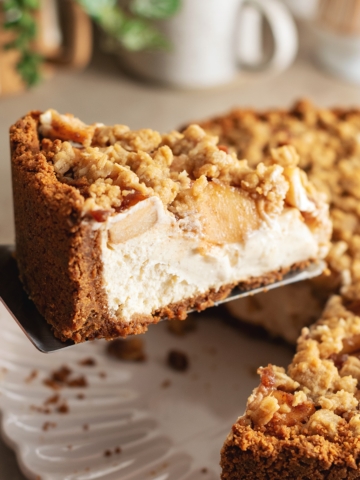
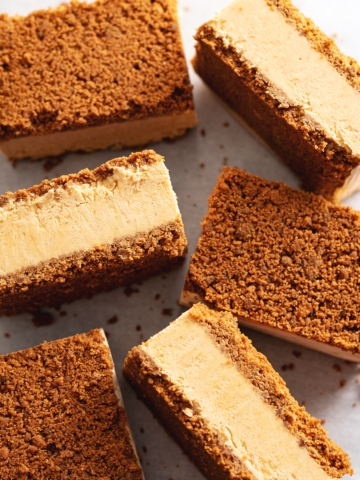
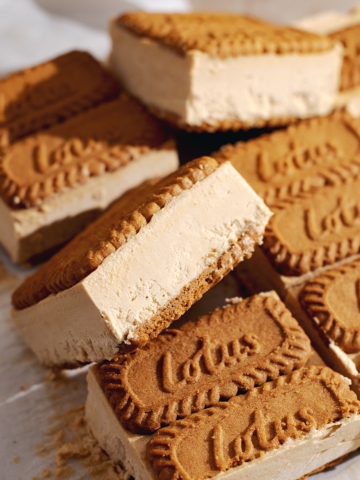
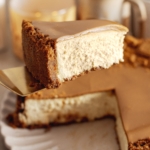
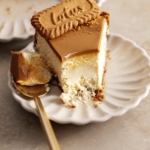
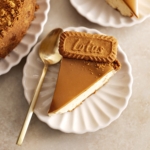
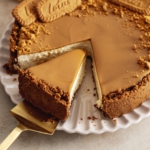
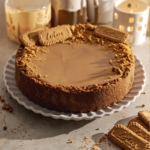
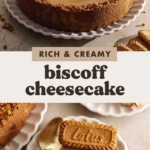
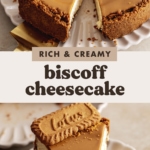
Leave a comment or review